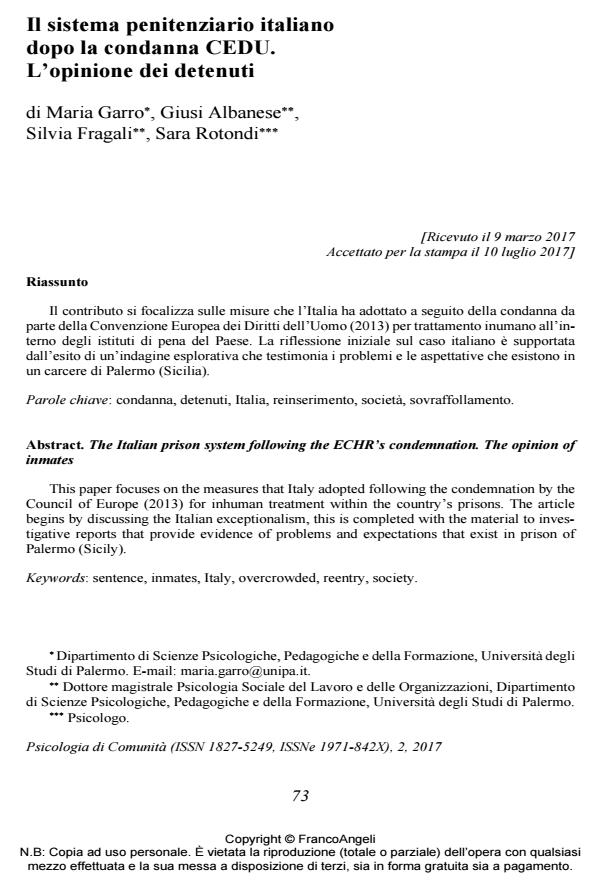The Italian prison system following the ECHR’s condemnation. The opinion of inmates
Journal title PSICOLOGIA DI COMUNITA’
Author/s Maria Garro, Giusi Albanese, Silvia Fragali, Sara Rotondi
Publishing Year 2017 Issue 2017/2
Language Italian Pages 11 P. 73-83 File size 165 KB
DOI 10.3280/PSC2017-002008
DOI is like a bar code for intellectual property: to have more infomation
click here
Below, you can see the article first page
If you want to buy this article in PDF format, you can do it, following the instructions to buy download credits

FrancoAngeli is member of Publishers International Linking Association, Inc (PILA), a not-for-profit association which run the CrossRef service enabling links to and from online scholarly content.
This paper focuses on the measures that Italy adopted following the condemnation by the Council of Europe (2013) for inhuman treatment within the country’s prisons. The article begins by discussing the Italian exceptionalism, this is completed with the material to investigative reports that provide evidence of problems and expectations that exist in prison of Palermo (Sicily).
Keywords: Sentence, inmates, Italy, overcrowded, reentry, society.
Maria Garro, Giusi Albanese, Silvia Fragali, Sara Rotondi, Il sistema penitenziario italiano dopo la condanna CEDU. L’opinione dei detenuti in "PSICOLOGIA DI COMUNITA’" 2/2017, pp 73-83, DOI: 10.3280/PSC2017-002008